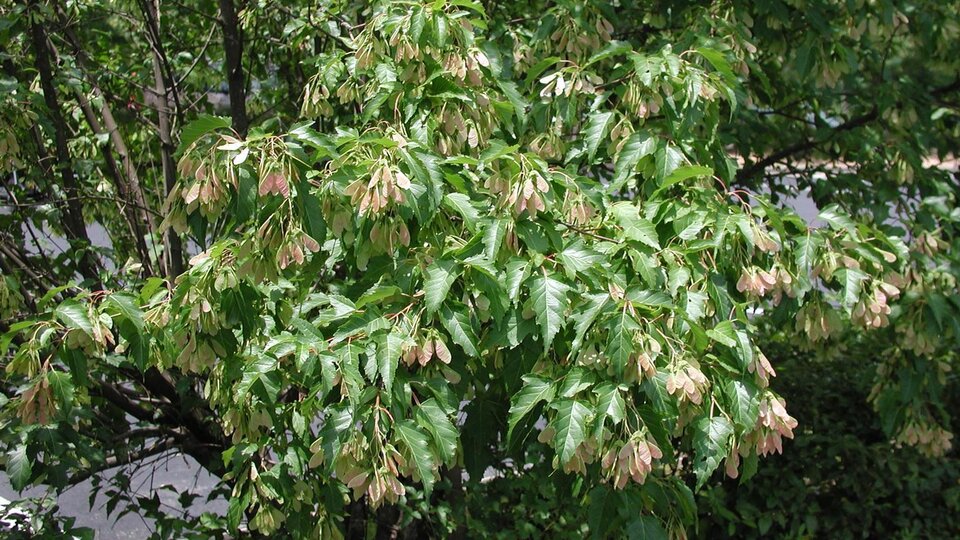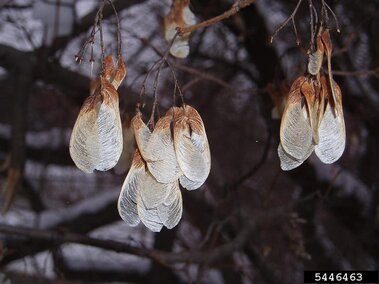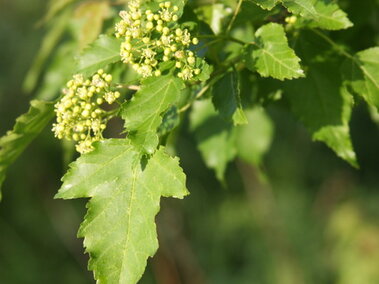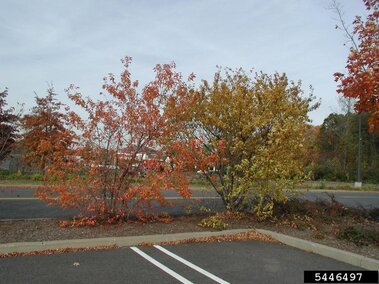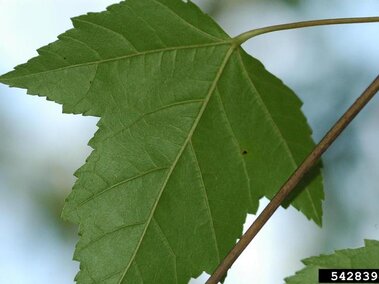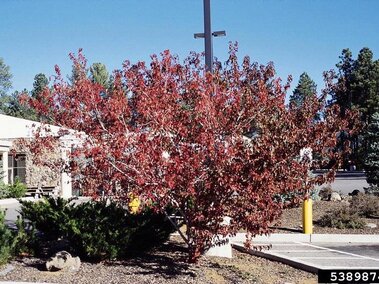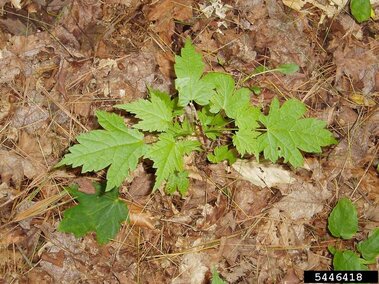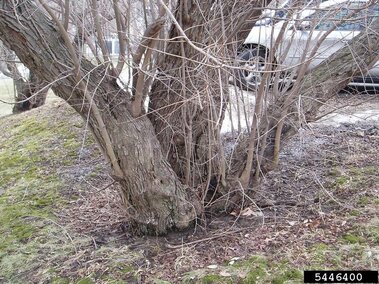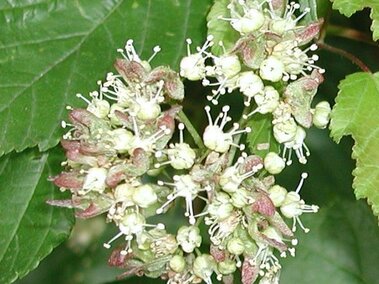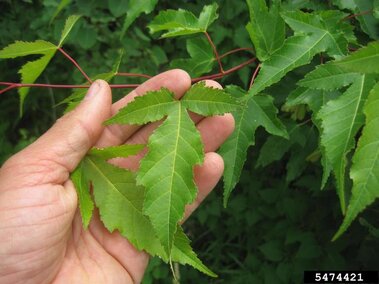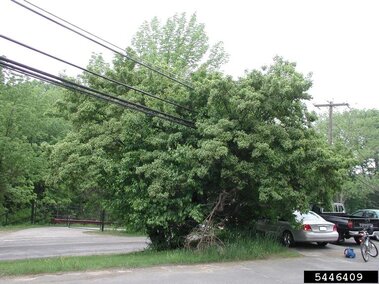General Information
Species Name: Acer ginnala
Also Known As: Amur maple
Family: Aceraceae (Maple)
Growth Form: Shrub/Tree
Life Span: Perennial
Flowering Dates: April-June
Origin: Asia
Toxic: Unknown. Some other species of maple (Acer spp.) can be toxic to cattle.
Why Is It Invasive?
Amur maple produce abundant seed, form dense monocultures, and outcompete other species. This could reduce the number of native species which would reduce the quality of the local ecosystem. It can displace native shrubs and understory trees in open woods, and shades out native grasses and herbaceous plants in more open habitats. It has little value for browsing animals. It releases compounds into the soil that inhibit the growth of other plants, and can quickly spread.
What Does It Look Like?
General Characteristics
Amur maple is a small tree that grows 15-21 feet tall, has a broad crown, and is sometimes pruned as a hedge. Its bark is smooth and gray with furrows and ridges. It is usually multi-trunked.
Flowers
Round, fragrant and yellow-white, in loose clusters on long stalks, appearing after tree has leafed out from May to June.
Leaves
Opposite, longer than they are wide, with three shallow lobes and double-toothed edges. Light green on the bottom and glossy on the top, turning bright orange or red in the fall.
Stems
Twigs are smooth and light grayish-brown. Trunks are smooth and gray to grayish brown.
Seeds and Fruit
Pinkish; Numerous, reddish, two-winged, inch long samaras that mature in late summer and persist on the tree until late fall.
Photos
Where Does It Grow?
Often found in early successional forests, forest edges, open disturbed areas, roadsides, open woodlands, ravines, stream banks, bottomlands, as planted ornamentals in yards and gardens, and in hedges and windbreaks. It has been widely planted for its hardiness and tolerates a wide range of soils and pH values. It is drought tolerant and highly cold tolerant. It grows best on moist, well-drained soils.
How Does It Spread?
Spreads primarily through wind or water dispersal of abundant winged samaras in late summer and fall. Most seeds land within 100 meters of the parent tree. Each tree can produce 5,000 or more fruits per year.
How Do I Control It?
Mechanical
Prescribed fire will set it back, but not eliminate it. Small infestations can be controlled by grubbing out individual plants. Seedlings or samplings are easily pulled by hand or they can be controlled or eradicated by mowing. Larger infestations can be controlled by cutting and treating the stumps with herbicide or basal bark spray treatments.
Cultural
If planted, it should not be planted within 100 yards of natural areas due to its aggressive spreading capabilities. However, it is recommended to plant another native tree species based on your location in the state.
Herbicide
Please refer to the 2025 Guide for Weed, Disease and Insect Management in Nebraska or contact your county weed control authority.
References and More Information
Arbor Hills Tree Farm, LLC: Landscaping and Trees for Shade
Center for Invasive Species and Ecosystem Health
Invasive Plants in Pennsylvania
Minnesota Department of Agriculture
Nebraska Weed Control Association
Stubbendieck, J., Coffin, M., & Dunn, C. (2019). Weeds of the Great Plains. Nebraska Department of Agriculture.
